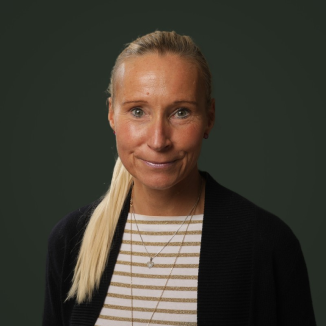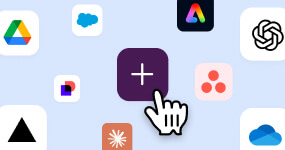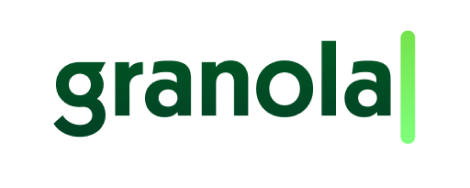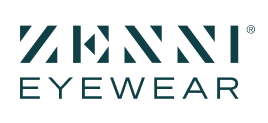In this digital age, everyone shares information at lightning speed. This means the news and media industry needs to be even faster. For these businesses, sharing information internally and removing silos is vital to remaining relevant and ensuring success.
One such organization is Polaris Media ASA, a media group consisting of 78 local and regional news media brands, 62 in Norway and 16 in Sweden, as well as a substantial printing and distribution business. Polaris Media employs more than 2,400 people who need to maintain flawless communication. Until recently, Polaris Media employees used a mix of communication tools that included Teams, email, and Slack, with the latter utilized mainly by a selected few media houses and some of the group functions.
“We wanted to ensure we had one common space where we could target communication to all employees,” said Vegard Nekstad, Product Manager at Polaris.
Very quickly, Polaris decided to expand its Slack use.

We wanted the best of both worlds. To collaborate and communicate even more, and at the same time strengthen and build local and regional culture
Transforming teamwork
Slack opened new ways of communicating and collaborating across the group. “Having a common system of sharing information is one thing,” said Asle Vestvik, CTO of Polaris Media. “But it was also about supporting a culture of transparency, enhanced usability, engagement, and a potential for extensive integrations.”
This meant that, with the company’s setup of various subsidiaries across two countries, it was possible to create a space that allowed for a combination of solutions. As a result, there are Slack Channels that reach everyone across all regions, as well as very specific private channels and Huddles that support and protect the sensitive work of small teams while allowing them to collaborate in the same way.
This level of organization also allows the company to create a melting pot of different work cultures and groups that come together while maintaining their own culture and sensitivities. In a way, Polaris created an organizational oxymoron of ‘separately together’.
“We needed the best of both worlds,” commented Jannicke Ianssen, Regional HR Director at Polaris. “Part of our success is that we keep our newspapers independent. So, we wanted to collaborate and communicate even more, and at the same time strengthen and build on local and regional culture.”
Sharing is caring
Everyone at Polaris has a Slack account and daily usage is continually growing, and the group is not slowing down. There have been training sessions, deep dive sessions, and social activities designed to encourage people to use Slack.
Channels are also used to streamline information sharing from various areas of the group. For example, all business units have dedicated support channels, which makes it much easier to get help and information. “We’re still building a culture where everyone can feel confident in their contributions and know it’s okay to answer questions even if they’re not experts,” said Nekstad. “At the moment it’s still leaders and managers that answer requests for help and support, but it’s something we are working on changing.”
This idea of helping each other and sharing information is also clearly visible through Canvas, with many business units using it to provide FAQ documents and connect them to their main channel. Additionally, integrations with SharePoint and Outlook further streamline collaboration and information flow across the group.
What’s more, moving from email to Slack has not only offered a faster way of reaching people, but it’s also paved the way for more engagement. “Slack offers a different way of communicating,” said Ianssen. “One of the advantages of this is an increase in communication because, in a way, we ‘lower the bar’ of formality. Staff don’t need to send well-scripted long emails anymore.”

Slack facilitates greater information sharing, which is important for our culture, but it also makes everything easily accessible.
Integrations and automations in breaking news
Like investigative journalists, Polaris leaders have been digging into what’s possible with Slack and taking advantage of integrations and automation to make everyone’s lives easier. “We have a lot of automations,” said Nekstad. “Some simple automations include meeting reminders, in-channel notifications, new hire onboarding messages, and out-of-office replies. But we also build more complex automations.”
For example, GitHub and LiveAgent integrations work in tandem to offer journalists and salespeople a digital help desk. When employees raise a query or have a problem, the help desk routes it to the right department. This triggers a GitHub ticket that prompts a Slack alert to the relevant people. The first step still relies on email, but this will soon be phased out. Polaris also has an Open AI integration built into different departments, which means AI assistance is being used throughout the organization.
Most importantly, collaborating and sharing materials related to breaking news is now much easier with automated newsroom alerts, built with a Python integration. The solution is, in essence, an alerting system based on public sources.
By monitoring public announcements, as well as community message boards, various newsroom teams receive immediate tailored notifications about important newsworthy developments. When a story breaks, a dedicated channel is created, and a ‘breaking bot’ helps gather all the relevant participants in one place. This also means that discussions and materials related to each story are easily accessible and kept together.
Phase one of the journey
With an implementation on such a large scale, Ianssen is very proud of how quickly the organization has adapted to change. This is connected to Slack’s simplicity and ease of use and, together with efficiency and speed, it’s helping Polaris build on its business success and lead the way in the industry.
Vestvik, like a true media representative, concisely summarized this recent journey: “Slack facilitates greater information sharing, which is important for our culture, but it also makes everything easily accessible.”















